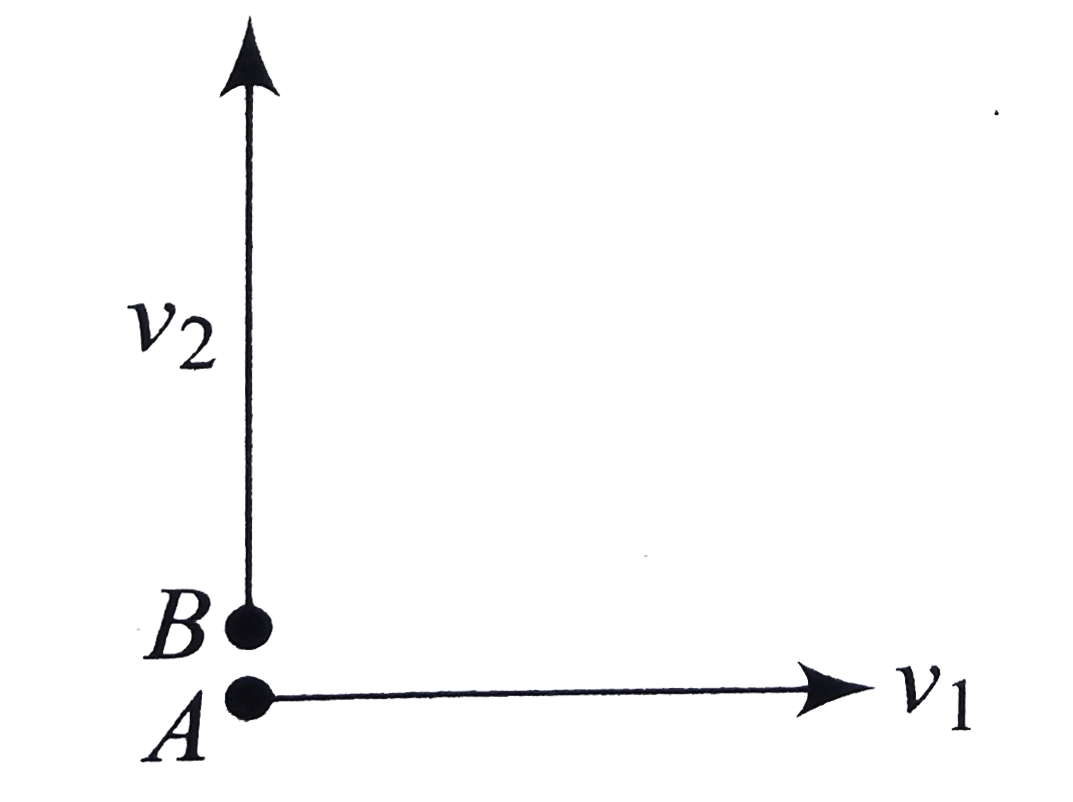Two identical non-relativitic partcles A and B move at right angles to each othre, processing de Broglie wavelengths λ1 and λ2, respectively. The de Broglie wavelength of each particle in their centre of mass frame of reference is
λ1+λ2
2λ1λ2(√λ21+λ22)
λ1λ2(√∣∣λ21+λ22∣∣)
(λ1+λ2)2
The correct Answer is:B

Let m be the mass each particle, then λ1=(hmv1) and λ2=(hmv2), where v1 and v2 are the velocities of two particles as shown in the figure.
→vCM=m→v1+→v22m=→v1+→v22
Velocity of A w.r.t. C frame is
→v1c=→v1−→vCM=→v1−→v22
|→v1C|=√→v1−→v22=|→v2c|
So, required wavelength is
λ=hm|→v1c|=hm×2hm√1λ21+1λ22
=2λ1λ2√λ21+λ22
Topper's Solved these Questions
- PHOTOELECTRIC EFFECTBook:CENGAGE PHYSICSChapter:PHOTOELECTRIC EFFECTExercise:Multiple Correct
Explore 10 Videos
- PHOTOELECTRIC EFFECTBook:CENGAGE PHYSICSChapter:PHOTOELECTRIC EFFECTExercise:Linked Comprehension
Explore 44 Videos
- PHOTOELECTRIC EFFECTBook:CENGAGE PHYSICSChapter:PHOTOELECTRIC EFFECTExercise:Subjective
Explore 16 Videos
- NUCLEIBook:CENGAGE PHYSICSChapter:NUCLEIExercise:QUESTION BANK
Explore 59 Videos
- RAY OPTICSBook:CENGAGE PHYSICSChapter:RAY OPTICSExercise:DPP 1.6
Explore 12 Videos
Similar Questions
Two identical non-re,aticivistic particles move at right angle to each other. Possesing de Broglie wavelength λ1 and λ2 Find the Broglie wavelength of each particle in the frame of their centre of inertia.
View SolutionTwo particles move at right angle to each other.Their de Broglie wavelengths are lambda_(1) and lambda_(2) respectively.The particles suffer perfectly inelastic collision.The de Broglie wavelength lambda of the final particle is given by :
View Solution
Knowledge Check
The de-Broglie wavelength λ
Ais proportional to massBis proportional to impulseCInversely proportional to impulseDdoes not depend on impulseTwo electrons are moving with non-relativistic speeds perpendicular to each other. If corresponding de Broglie wavelengths are λ1 and λ2 , their de Broglie wavelength in the frame of reference attached to their centre of mass is:
AλCM=λ1=λ2B1λ1=1λ1+1λ2CλCM=2λ1λ2√λ21+λ22DλCM=(λ1+λ22)Two identical non-re,aticivistic particles move at right angle to each other. Possesing de Broglie wavelength λ1 and λ2 Find the Broglie wavelength of each particle in the frame of their centre of inertia.
AλCM=(λ1+λ22)BλCM=2λ1λ2√λ21+λ22CλCM=λ1=λ2D1λCM=1λ1+1λ2
The de - Broglie wavelength associated with the particle of mass m moving with velocity v is
View SolutionThe ratio of de broglie wavelength of a proton and an alpha particle moving with the same velocity is
View SolutionA proton accelerated through a potential V has de-Broglie wavelength λ. Then, the de-Broglie wavelengthof an alpha-particle, when accelerated through the same potential V is
View SolutionThe de-Broglie wavelength of a particle of mass 6.63 g moving with a velocity of 100ms−1 is:
View SolutionTwo particles of de-broglie wavelength λx and λy are moving in opposite direction. Find debroglie wavelength after perfectly inelastic collision:
View Solution

